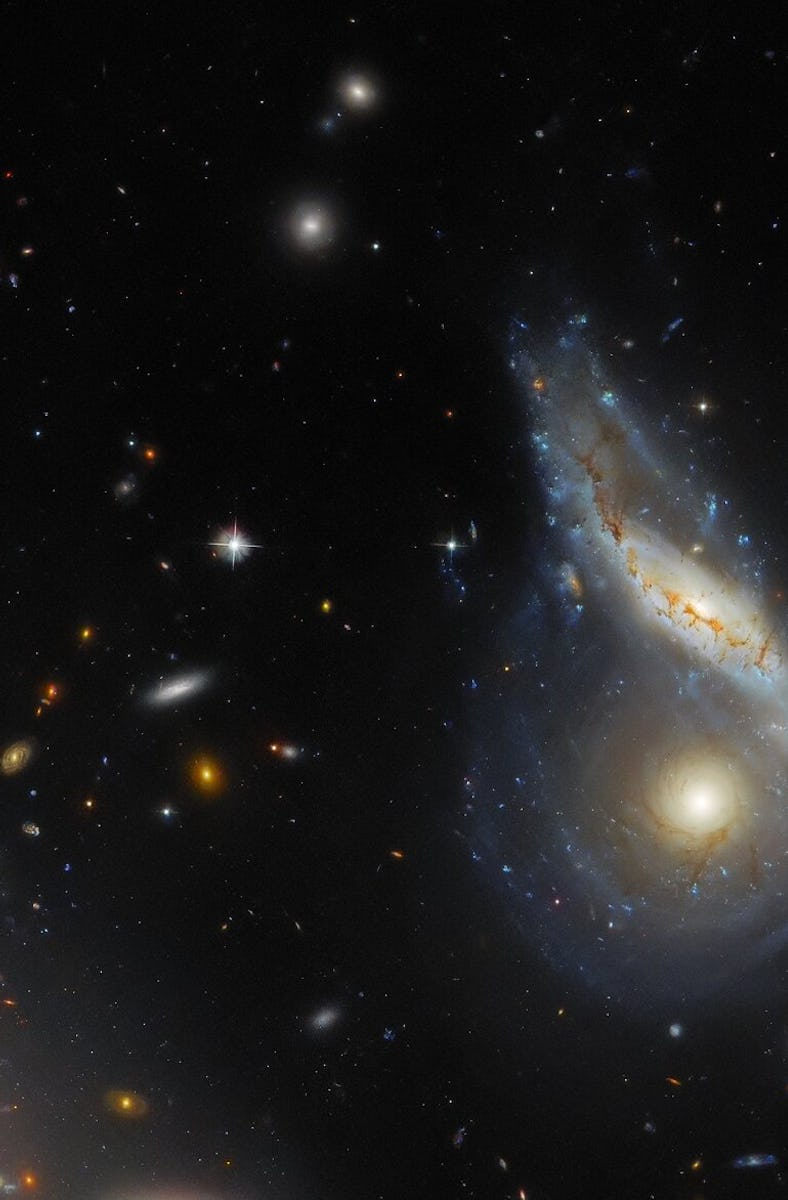The Milky Way Is On A Terminal Collision Course — Is This New Hubble Image A Preview?
The constellation Hercules hosts this epic clash of two galactic juggernauts.

Outer space nonchalantly sheds a “tear” as two galaxies meet their end — but is the distant scene, pictured in a new Hubble Space Telescope image, a finale?
At first glance, the answer must be yes. Some 570 million light-years away from Earth, a face-on galaxy called LEDA 59642 is overlapped by a tilted, mostly side-on galaxy called NGC 6040 that has severely warped on one side and taken on a shape resembling the top of a droplet. The galaxies’ proximity and devolution is a story as old as time: galaxy mergers.
The two bodies — known collectively as Arp 122 — are careening into one another. Their stars, planets, gas, and dust will experience new gravitational forces, according to a statement that NASA and the European Space Agency (ESA) published on Friday. “Galactic collisions and mergers are monumentally energetic and dramatic events,” write officials from the two space agencies behind Hubble.
Arp 122, located in the constellation Hercules about 570 million light-years from Earth.
In many ways, the galaxies will unravel: the grand, highly organized spiral structures may go away. They might turn out to be irregular galaxies, looking like round hazy blobs until maybe evolving into something new.
Although this scene in the constellation Hercules is playing out very far away, it’s a preview of what will happen here at home. The Milky Way is on a collision course with the Andromeda Galaxy (also known as M31), scheduled for 4 billion years from today.
But the Milky Way has always been a work in progress. Many galaxies, large and small, have combined to add or subtract to the Milky Way’s starry profile, according to research from ESA’s Gaia spacecraft. Astronomers know that the Andromeda galaxy is a patchwork of other galaxies, too.
The mashup will happen slowly. “The process of colliding and merging will not be a quick one either: it might take hundreds of millions of years to unfold. These collisions take so long because of the truly massive distances involved,” agency officials wrote.
What will happen to Arp 122 and to us is uncertain, but one possible outcome is that the ménages will sort themselves into elliptical galaxies. One such object appears in this image, too, at the bottom left corner. It’s NGC 6041, the elliptical galaxy that acts as the center of the galaxy cluster to which Arp 122 belongs.
While Arp 122 reveals a preview of what might become of the Milky Way, it also gifts Earthlings with a dazzling cosmic teardrop to admire.